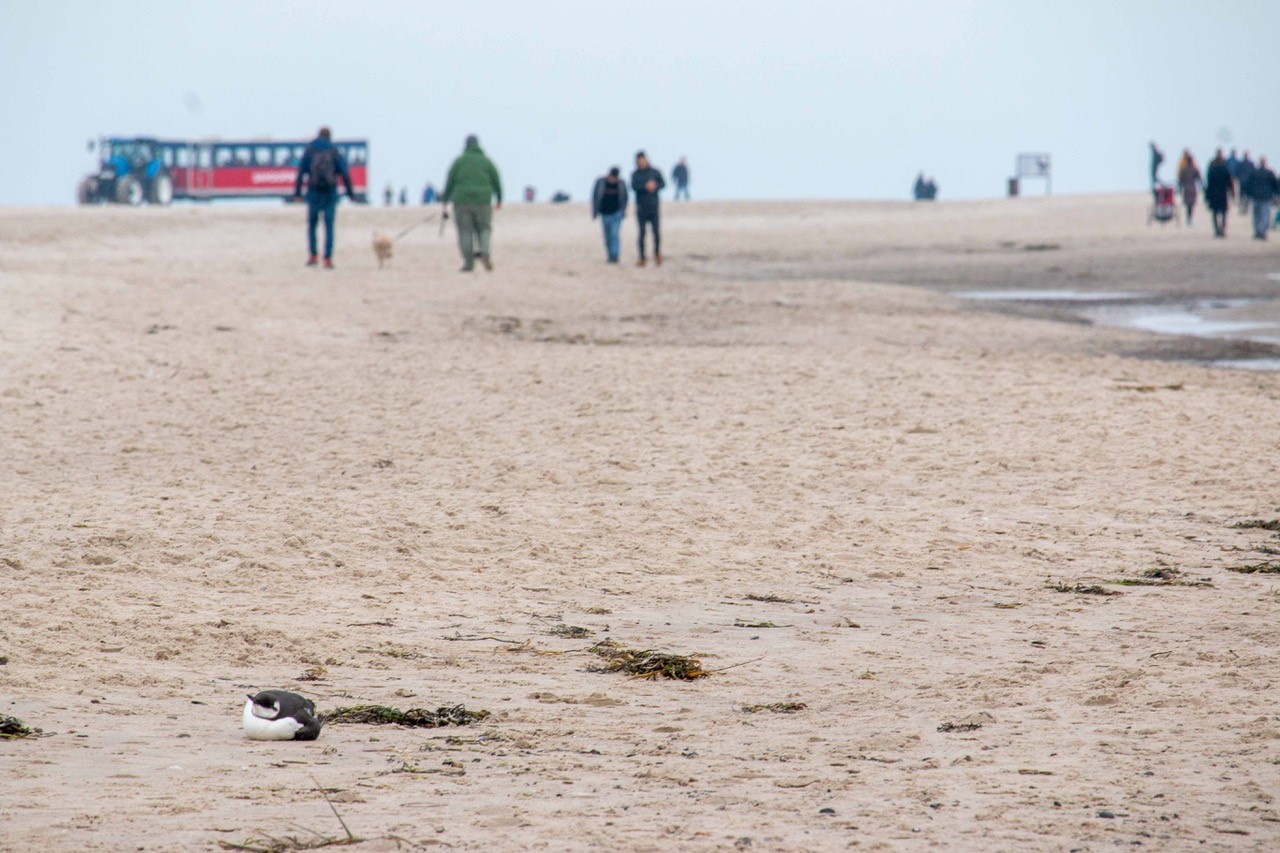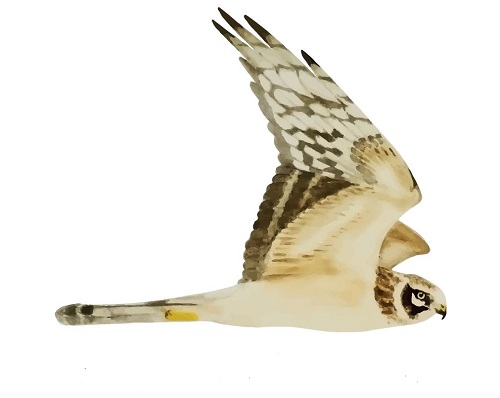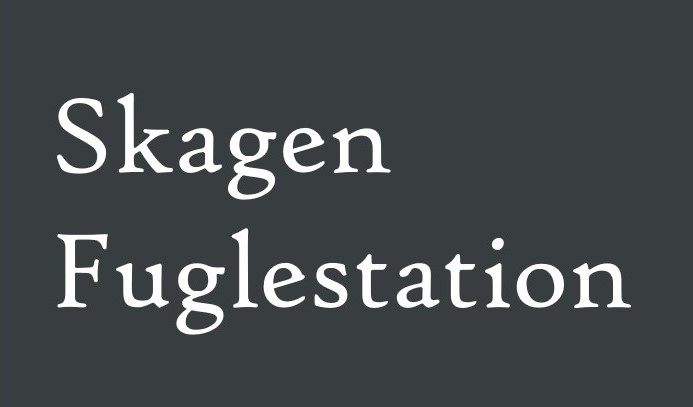Her på Skagen Fuglestations blog bringes korte nyheder i dagbogsformat om hændelser på fuglestationen.
High winds and Alks
Another day without ringing at the station today, but it appears the winds should reduce tomorrow so we hope to get back out in the morning. Perhaps the winds will deliver some rarities in the nets and out at sea.
Myself and Augustin went observing from Kattegat bunker this morning, hoping to find shelter from the strong winds. After two hours conditions proved too challenging and unfortunately, we had to leave observations early. Justine and Angela joined for general observations at the end, and we found a group of Horned Larks (Bjerglærke) near the tip, which is always a birding treat.
For those who are interested I have included an in-depth view of something that has been occupying much of our time and thoughts recently at the observatory, the recent influx of Auk (Alk sp.) deaths here in Skagen.
Ringmærkning - Det Grå Fyr
Enkeltbekassin - 1
Ringmærkning - Jennes Sø
Gærdesmutte - 1
Solsort - 1
Blåmejse - 3
Musvit - 4
Kvækerfinke - 1
Lille Gråsisken - 21
Total 32
Folk på stationen: Simon S. Christiansen, Augustin Sticksel, Rosalina Sø Leth-Nissen, Robbie Lawler, Angela Di Pumpo, Justine Costa, Knud Pedersen, Lisa Vergin, Kirsten Bregn, Esben og Line.
Klik her for at se dagens observationer fra DOF basen af fugle i Skagen
As some may be aware there has recently been an unusual number of dead or dying Auks (Alk sp.) washing up on the beaches around Skagen. Many who have not recently visited the coastline may not have heard anything about the topic, therefore we are providing a brief overview of the situation. I will provide links at the end so readers can read further about the situation in the U.K as well as some more general information. Please be aware that I am no conservation expert, but all efforts have been made to ensure that all information provided is correct.
At the end of August reports started to emerge of large numbers of dead Auks (Alk sp.) washing up dead around the British coast, many of whom appeared to have died from starvation. Soon after we began to find unusually high numbers of Guillemots (Lomvie) and Razorbills (Alk) dead or dying along the coastline around the observatory; local birders such as Knud Pederson and the teams’s lead – Simon - both believe the situation is highly unusual compared to previous years. There have also been similar reports from other locations including in Norway. Whilst the numbers here are of concern, the numbers of dead guillemots in Britain appears to be of a far higher magnitude than what is currently happening locally here.

Credit: Eva Hvelplund
The precise numbers of deaths is difficult to measure, but we have set in place protocol which should aid our understanding of the magnitude and possible causes of the situation. After talks with Aarhus University, we have agreed to start documenting and collecting specimens we encounter for later study at the university. We have already collected several dozen birds, but have unfortunately seen many times more. Today we encountered five dead Auks (Alk sp.) just around Grenen; four of the specimens were not in good enough condition for collection and will not be included in the study. Along with keeping a more accurate track of total numbers of affected birds we have begun weighing our collected specimens. The average weight of collected specimens is far lower than that of a healthy individual of the specimen’s species, therefore it appears that starvation was most likely a contributing factor to the deaths of our specimens. The emaciated individuals washing up on our shore mirror the condition of those in Norway and Britain.
The exact cause of these mass starvation events is probably linked to a lack of suitable food items, though what caused this shortage is yet unknown. While Guillemot (Lomvie) numbers are increasing in Denmark it is widely acknowledged that global Auk and wider seabird populations are greatly decreasing. Factors contributing to decreasing sea bird populations can be complex, such as: as collapsing fish stocks from overfishing; climate change and rising sea temperatures, and various types of pollution. The fact these deaths are happening simultaneously in several localities highlights how conservation in an international project
We will do our part in the continued monitoring of the situation locally and will report any new developments.
Further reading and links:
Sea bird population trends in Scotland: https://www.nature.scot/seabird-numbers-decline-almost-50
The effect of climate change on sea bird population in Svalbard: https://seapop.no/en/2021/09/global-warming-alters-the-seabird-community-on-svalbard/
Auk deaths in the U.K : https://community.rspb.org.uk/ourwork/b/scotland/posts/an-update-on-seabirds-on-the-east-coast and https://www.birdguides.com/news/investigation-launched-as-auk-crisis-worsens/
Guillemot population trends in the EU: (http://datazone.birdlife.org/userfiles/file/Species/erlob/supplementarypdfs/22694841_uria_aalge.pdf



